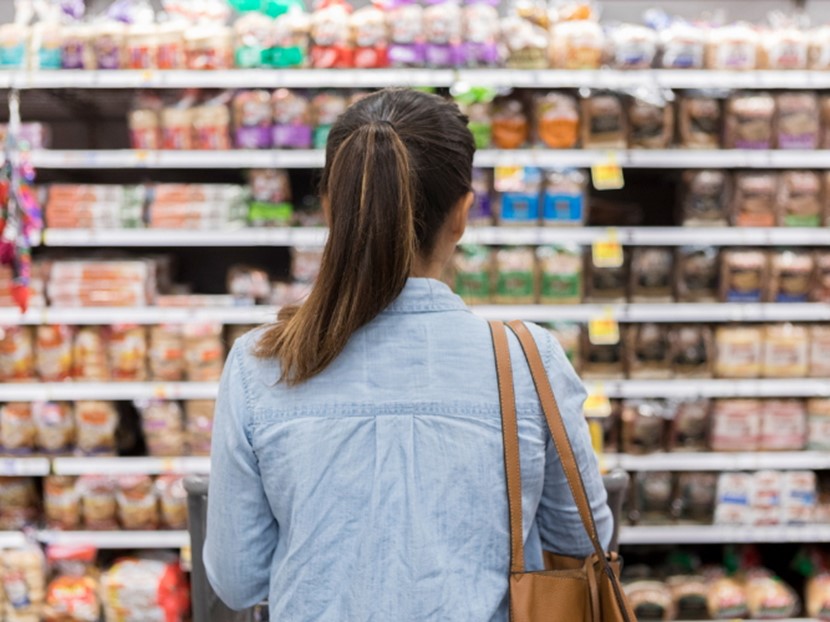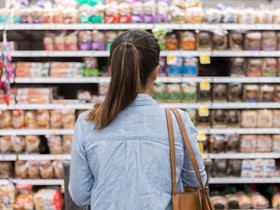Food additives: be your kids' food detective

Kids, food and behaviour - what's the link? Nutritionist Leanne Cooper goes sleuthing.
Where once we blamed sugar for the wayward behaviour of children, we now know that the culprit is far more likely to be a chemical of some sort. There is mounting evidence against the use of the many additives in our foods, particularly in foods for children. Indeed, an increasing number of countries are banning the use of many such chemicals.
Additives are commonly used to improve the taste, texture and even appearance of many processed foods. They're also used to improve the shelf life - to prevent food from going off. They can also assist companies in reducing waste and improving profit.
Food additives are listed according to their functional or class names. Additives can include everything from acidity regulators which, among other things, help limit the growth of some micro-organisms in the food, to emulsifiers which stop oil and water separating into layers, and thickeners which help give sauces their desired consistency.
Research from the Royal Prince Alfred Hospital's Allergy Unit in Sydney highlights at least 50 dubious common additives. Many additives still used in Australia and NZ are banned overseas, for example food colouring 102 (yellow).
Whole foods, approved organic foods and home-grown foods are naturally good choices if you are seeking to go additive-free.
Research is ongoing in this area, aiming to answer questions such as what effect a mix of additives can have and their cumulative effect over time.
What to know?
It can certainly be difficult to decipher the back of a packet while you're busy doing your weekly grocery shop. But here are a few tips to help you steer clear of foods packed with artificial additives:
- Read ingredients labels. Additives must be labelled if the product comes from Australia, NZ (or most Western countries).
- Opt for sun-dried or home-prepared dried fruit.
- Wash all produce thoroughly.
- Reduce sweets as much as possible to avoid exposure to colourings.
- Opt for products with natural colourings (after all, a party sometimes calls for sweets), but keep in mind that there is increasing concern over these also.
- Use cold-pressed oils to avoid oils that are so processed they need the addition of antioxidants and other chemicals to stabilise and make them more palatable.
- Avoid overly flavoured foods and those with MSG (621), eg, BBQ or chicken-flavoured chips and biscuits. Also, packet noodles notoriously have MSG in their flavour sachets. Buy plain varieties or brands that don't use additives.
- Avoid processed meats, they are not only generally the greatest source of trans-fats but also tend to contain a number of nitrate-based additives.
- Avoid "junk" drinks such as cordials and fizzy drinks that commonly have benzoates. Opt for water or unsweetened, natural, freshly made juices or plain milk.
- It's good to keep in mind that "ingredients must be declared in the statement of ingredients in descending order of ingoing weight" (Food Standards code, statement 1.2.4).
- Consider going organic, or at least avoid eggs, meat (it seems nitrates find their way into mince), canned fish and other foods that have added colour as a visual enhancer. If you prefer to select just some organics, opt for organic produce where you eat the skin (which in non-organic produce may be covered with pesticides).
- Visit the Food Standards website (www.foodstandards.govt.nz) for a complete list of food additives.
As you wade through the well-researched and well-meaning information, it may become obvious that just because a product is additive-free doesn't mean it is free from GE ingredients, excessive fat, sugar or salt. And some just contain too few nutrients. - Going additive-free is a great idea, but when selecting healthy food it isn't the only consideration. Like most things in nutrition, it's about the whole picture.
What to look out for
Let's take a closer look at a few of the common additives and, in particular, those that appear in foods often eaten by children, so you can make up your own mind.
- Benzene or sodium benzoate (211): In technical documents benzene is referred to as "a commonly used industrial chemical", so it doesn't take much to convince us that it probably isn't ideal in our foods.
Benzoic acid and benzoates are thought to be linked to asthma, hyperactivity in children and altered brain functioning.
Fizzy drinks commonly contain benzene, as do some flavoured mineral waters, cordials, some fruit juices and drinks, energy drinks and flavoured/sports water. However, it can also turn up in oral preparations (mouth washes etc), sweets, medicines and a number of other foods.
So next time you stroll down the drinks aisle of the supermarket, pick up a couple of these products and scan the ingredients list for sodium benzoate to see how prevalent it is. - Sulphur dioxide (220): A preservative regularly used on dried fruit, but can also turn up in soft drinks, juice, cordial, wine and even vinegar. It is reputed to cause tummy upsets, nausea, diarrhoea and rashes. Number 220 has also been linked to asthma, and it seems it can also affect some nutrients in the body.
- Tartrazine (102, yellow): Banned or restricted in a number of countries, 102 turns up in sweets, drinks, jams, cereals and pretty much anything that needs a bit of yellow colouring. Its effects range from links to asthma, skin rashes, behavioural changes and even hyper-agitation in children.
- Chocolate brown (155): Banned or restricted in a number of countries including the USA, Norway and France. Used in chocolate cake mixes, it's thought to be linked to asthma, cause skin rashes and adverse reactions in children with ADHD.
- Monosodium L-glutamate (MSG, 621): Commonly known to many people, MSG was one of the first examples of the community becoming aware of potential health dangers caused by additives.
Found in food, cigarettes and animal food, it was once widely used in some takeaway foods but with increased consumer concern it is now far less common. Asthma seems to be a reasonable link, along with skin rashes and altered behaviour. - Aspartame: A common artificial sweetener in Nutrasweet and Equal which has been reasonably well researched with a number of dubious findings. Aspartame appears to cause migraines and research is ongoing in terms of potential links to brain tumours.
Artificially sweetened products really don't have great support with recent research suggesting they can affect nutrients and may influence weight gain.
Leanne Cooper is a nutritionist, mum to two boys and lives in Australia.

AS FEATURED IN ISSUE 20 OF OHbaby! MAGAZINE. CHECK OUT OTHER ARTICLES IN THIS ISSUE BELOW

















